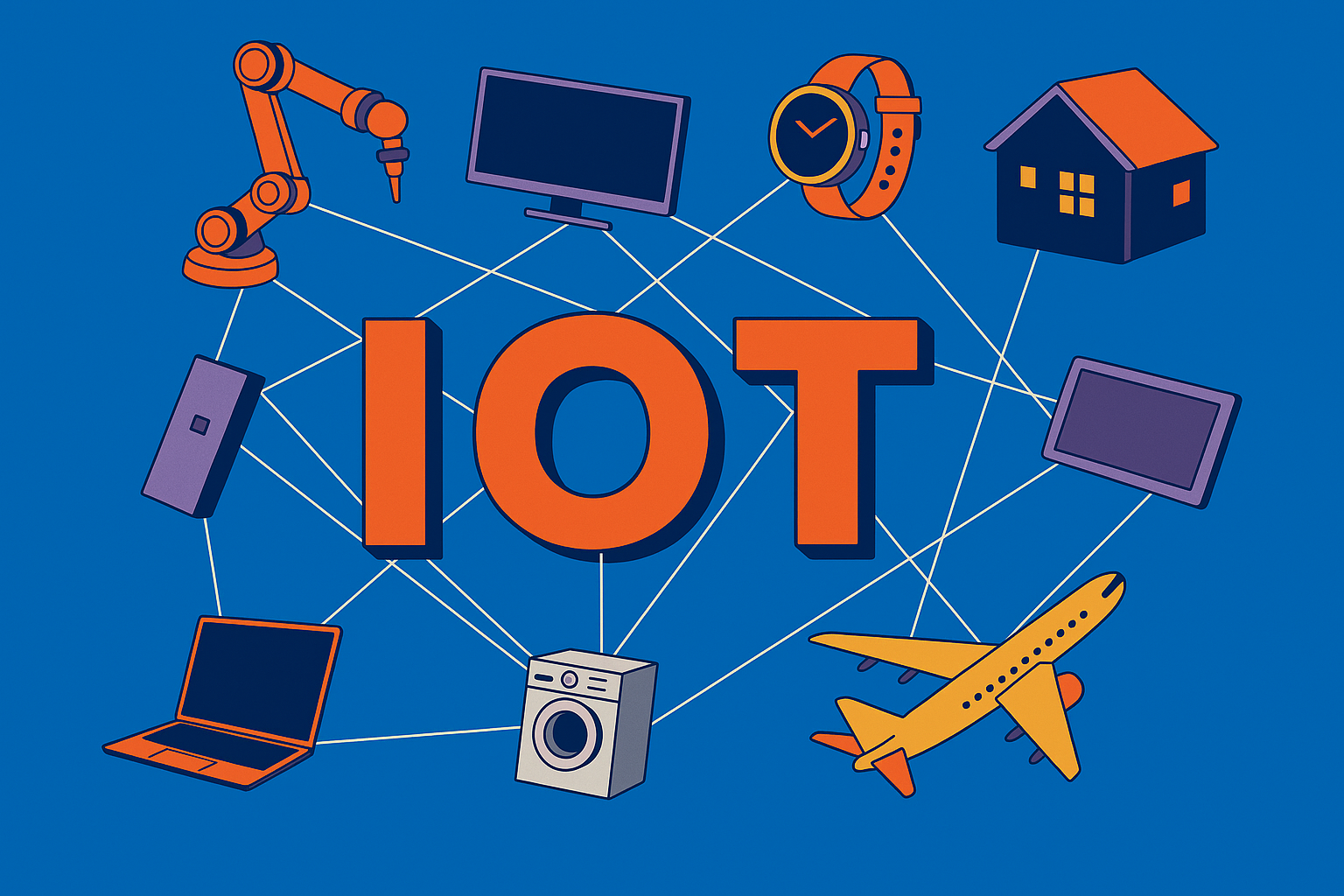Living with Things that Think: The Human Side of IoT ;)
It’s 7am and your wearable nudges you awake, not because you set an alarm, but because it noticed your heart rate dip into its most restful pattern. In the kitchen, your fridge suggests breakfast options based on what’s inside (and your blood sugar readings from last night). On the way to work, your car reroutes you around a traffic jam, informed by thousands of other drivers’ GPS signals.
This is the Internet of Things (IoT) at work. Billions of devices, 42 billion by 2025 according to IDC, quietly tracking, sharing, and learning. They don’t just serve us; they’re beginning to anticipate us.

From Factories to Front Rooms
In many ways, IoT was born in the factory. Predictive maintenance on heavy machinery, sensors in ABB’s industrial systems, and cyber-physical production lines are the backbone of Industry 4.0. These technologies promised efficiency, fewer breakdowns, more output, but also a shift in business models. Rolls Royce’s “Power by the Hour” didn’t just sell jet engines; it sold uptime, enabled by a network of sensors that knew when a part was about to fail.
But the story doesn’t end on the factory floor. Today, IoT stretches from the industrial to the intimate. In healthcare, wearables and even experimental “IoT pills” promise to move us from reactive medicine to preventative care. In agriculture, soil sensors help farmers in Kenya water more precisely, conserving scarce resources. At home, a teenager in Lagos can use Alexa to dim the lights while her parents in the village rely on smart meters to manage their prepaid electricity more efficiently.
Where the “Smarts” Live
One of the fascinating debates in IoT is where the intelligence should sit: in the cloud or at the edge. For a self-driving car, edge computing, processing right where the data is generated, can literally be the difference between safety and disaster. For a farmer’s irrigation system, sending aggregated data to the cloud may be enough.
This balance of centralised and edge intelligence isn’t just technical. It shapes how responsive our devices feel, how safe we are on the road, and how affordable these solutions become for communities that can’t afford constant data streams.
Human Stories in the Data
Behind every sensor is a human life. When Waze reroutes drivers using passive crowdsourcing, it’s our daily commutes that become the raw material. When InsideTracker analyses 150,000 blood samples, it’s our health journeys that power the algorithm.
The promise is profound: personalised nutrition, safer streets, smarter homes. But so are the risks. A child’s wearable tracker could expose their location to strangers. A connected car could be hacked, hijacked remotely. A family’s smart speaker could listen a little too closely.
The Next Disruptions
Looking ahead, the biggest disruptions will not be the devices themselves but the shifts in how we live with them:
- AI + IoT (AIoT): devices that don’t just sense, but decide
- Servitisation: paying for outcomes, not products, uptime, not engines
- Smart Cities: where our movement, moods, and energy use become part of urban planning
- Crowdsourced Economies: where citizens’ data fuels platforms, sometimes without consent or compensation
- Security Frameworks: where trust becomes the new currency, as vulnerable sensors become prime hacking targets
The Human Equation
The Internet of Things isn’t just about things. It’s about people, how we eat, travel, heal, farm, and play. The factories, cars, homes, and wearables are only as meaningful as the stories they enable: a grandmother in Nairobi whose blood pressure is monitored remotely, a commuter in Berlin who gets home faster because of real-time traffic data, a farmer in Kaduna who loses less crop to drought.
The question we must ask isn’t what can things do? But what should they do, and for whom?
Because in the end, the real revolution isn’t that devices are talking. It’s that we’re beginning to live in a world where things have opinions about us, and we need to decide whether we like what they’re saying.



No Comments